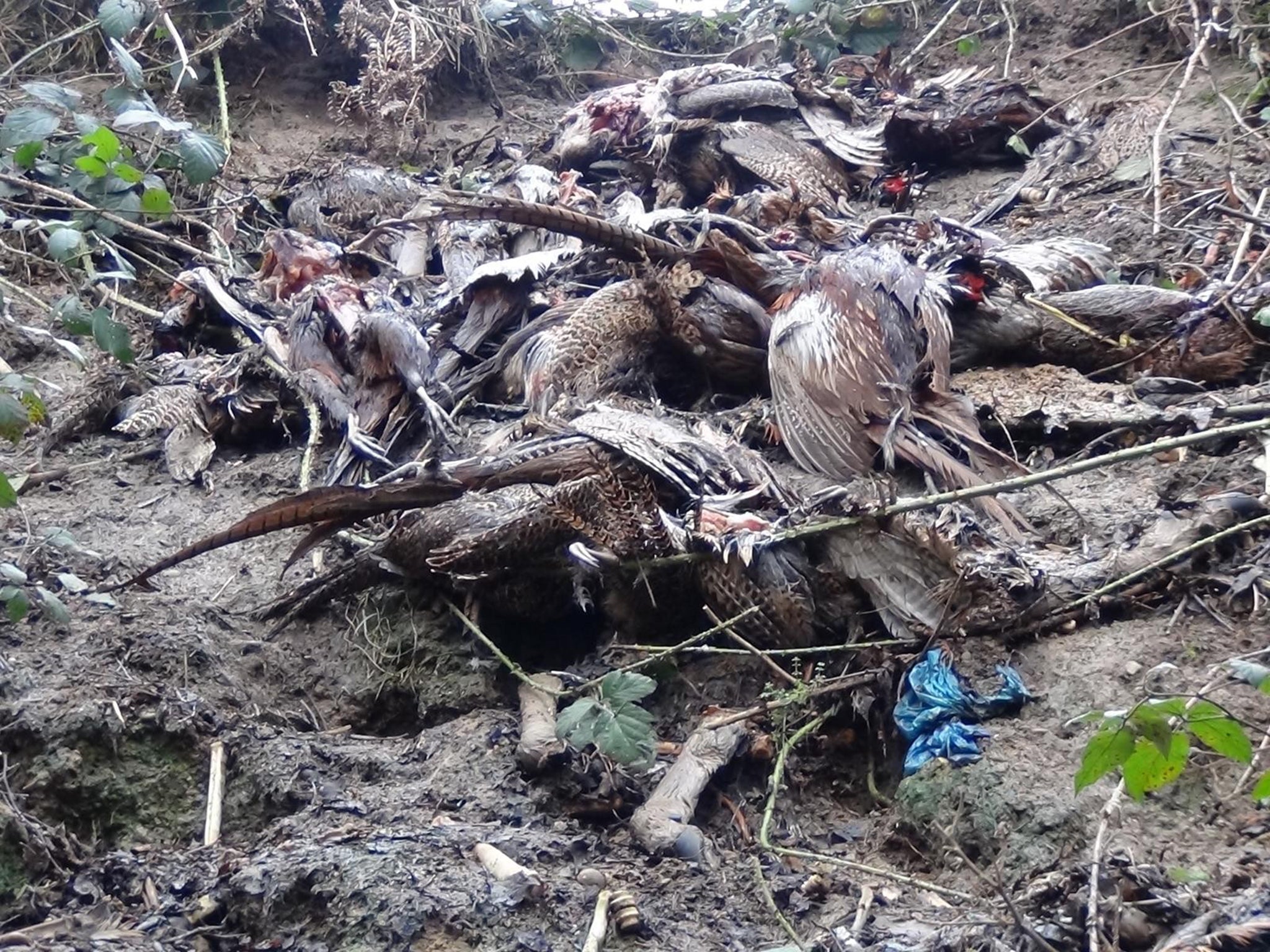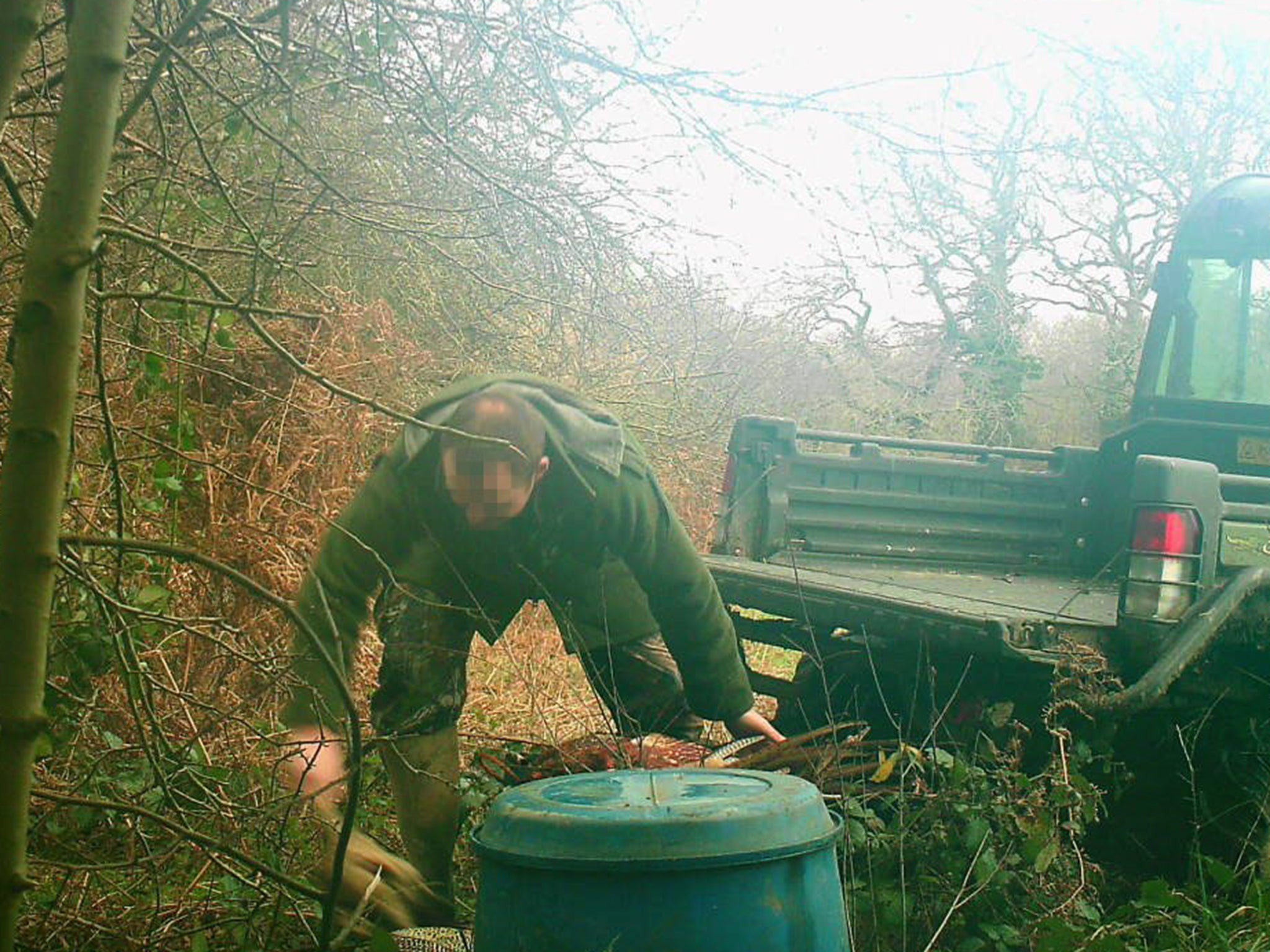Secret photos of dozens of pheasants dumped into a pit expose 'myths' of hunting industry
Exclusive: Pictures reveal ‘stink pit’ filled with bird and animal carcasses

Your support helps us to tell the story
From reproductive rights to climate change to Big Tech, The Independent is on the ground when the story is developing. Whether it's investigating the financials of Elon Musk's pro-Trump PAC or producing our latest documentary, 'The A Word', which shines a light on the American women fighting for reproductive rights, we know how important it is to parse out the facts from the messaging.
At such a critical moment in US history, we need reporters on the ground. Your donation allows us to keep sending journalists to speak to both sides of the story.
The Independent is trusted by Americans across the entire political spectrum. And unlike many other quality news outlets, we choose not to lock Americans out of our reporting and analysis with paywalls. We believe quality journalism should be available to everyone, paid for by those who can afford it.
Your support makes all the difference.Amid the festering remains of dead deer and game birds, some 40 freshly culled pheasants are slid from containers by an estate worker into a pit to join a slowly decomposing open-air mulch of meat.
The mass of rotting flesh, feather and bone is a disturbing sight in the heart of the English countryside, a literal “stink pit” where some of the discards of Britain’s £2bn shooting industry are left to putrefy.
Images taken from hidden cameras and passed to The Independent show dozens of pheasants being heaved into a hole on a private Berkshire shooting estate once frequented by royalty and former senior Conservative politicians and now owned through companies based in the Channel Islands and Switzerland.
According to animal rights campaigners, the decomposing remains show not only a gritty side to rural life but also challenge the claim that birds shot for sport are overwhelmingly used as food and sold to supermarkets or butchers.
Dr Toni Shephard, head of policy and research at the League Against Cruel Sports, said: “The dumping of pheasants unfortunately comes as no surprise. The ‘one for the pot’ argument often spouted by the shooting industry is a myth.”

The industry, which produces more than 30 million pheasants a year, has long been dogged by suggestions that it raises excessive numbers of birds and creates a surplus which has to be disposed of – a charge strongly denied by its representatives.
According to industry guidelines, all game shot in the countryside must be treated as food and “should be treated as such from the moment it is shot until it reaches the table”.
The managers of the photographed site, operated by Polesdon Estates Ltd, told The Independent that all birds shot on its land were either given to participants in shoots or sold to a registered game dealer. They said the only birds disposed of were those which were not fit for sale.
With the advocacy of celebrity chefs including Jamie Oliver and Hugh Fearnley-Whittingstall, sales of game have rocketed and it is claimed that up to 97 per cent of all edible quarry killed in Britain is now eaten.
At least 35 million pheasants are reared for shooting in Britain each year, part of an industry that supports 47,000 jobs and spends £250m a year on conservation.
But anti-blood sports campaigners claim that behind such success lie grisly sights such as that found on the Polesdon Estate whereby freshly-shot birds – which estate managers insist are unfit for consumption – are dumped rather than passed into the food chain.
WARNING: This video contains footage that some may find upsetting
While the pheasants attract lucrative custom when alive in the shape of shooters, they are not much of a moneyspinner once dead. They are sold by supermarkets and butchers for about £6 a time, but estates and farmers receive just 25p per bird.
Using concealed cameras, activists recorded activity on the estate, previously known for its select shooting events attended by the great and the good, over three months from December. On three occasions a worker was seen arriving in a motorised pick-up at a pit in a small area of woodland and emptying large metal containers of pheasants down into the ditch. Many of the pheasants were tied into a “brace” of two birds with string, a common practice when birds are shot.
The pit appeared to be filled with the detritus of other shooting expeditions, including the skulls or carcasses of up to four deer which were rotting at the site. It is not illegal to dump animals without burial as long as they have died in the immediate vicinity.
Dr Shephard added: “Around 500 birds can be killed in one day’s shooting. This is far too many birds for a shooting party to eat or give to friends. Many are routinely dumped in mass pits as waste products following the day’s shooting.”
The resulting so-called “stink pit” – sometimes used by game estates to lure predators such as foxes – is in stark contrast to the gilded clientele previously associated with the estate’s shoots, which were operated at least until 2002 by Sir Jocelyn Stevens, a former chairman of English Heritage.
A spokesman for the Polesdon Estate said: “A small proportion of birds shot, that are not in a suitable condition to be accepted by the game dealer, have to be disposed of.”
Join our commenting forum
Join thought-provoking conversations, follow other Independent readers and see their replies
Comments